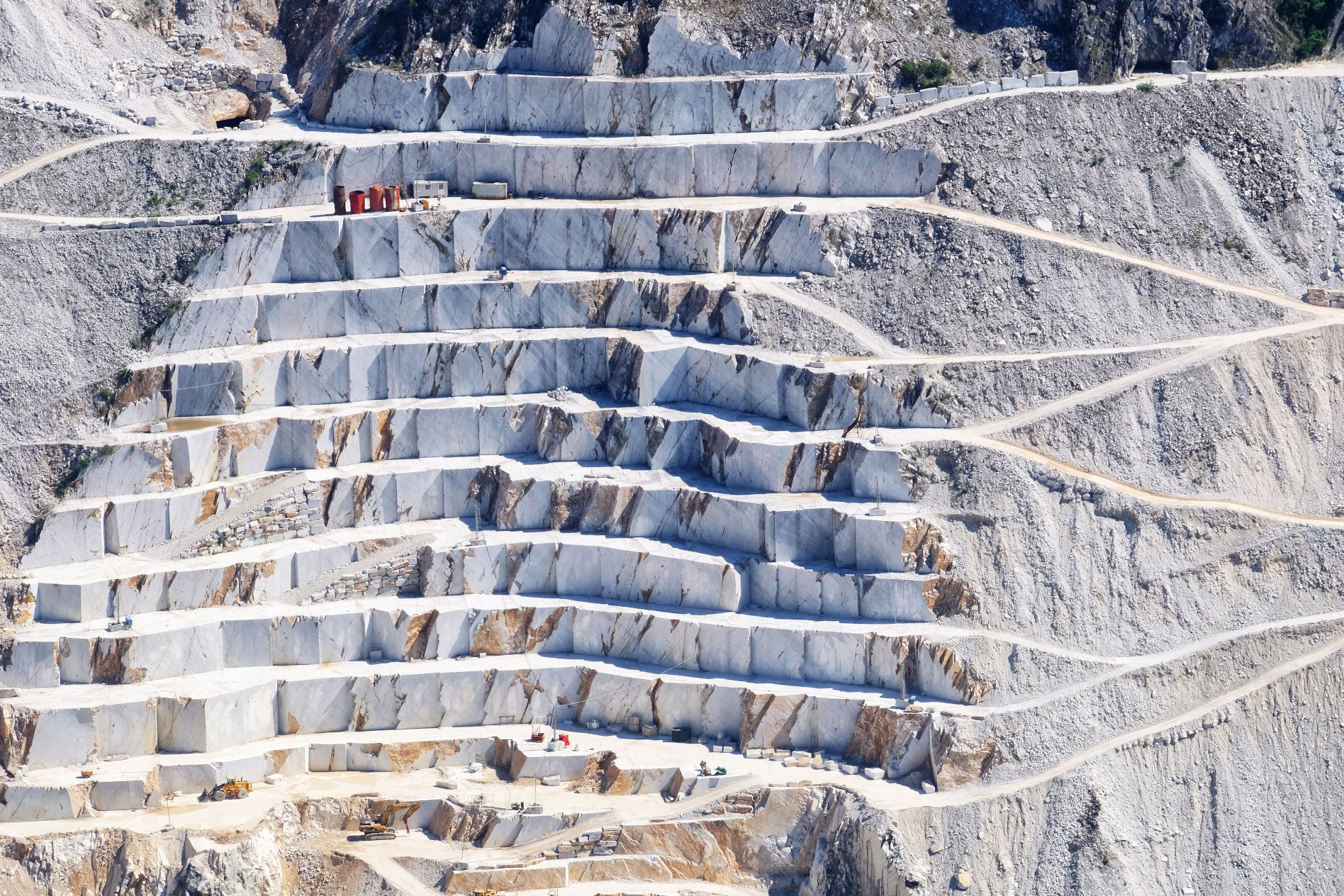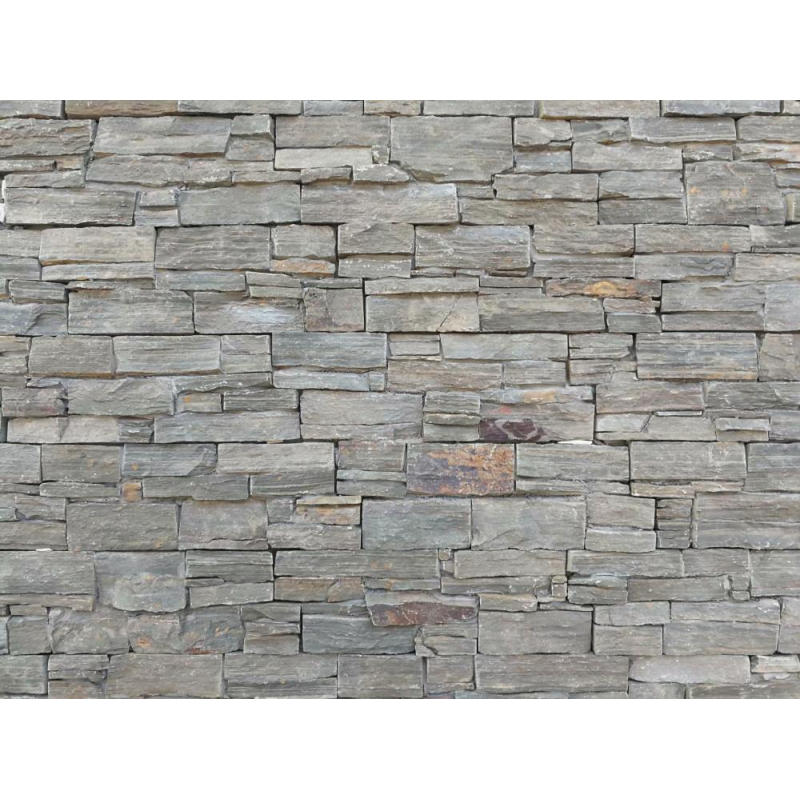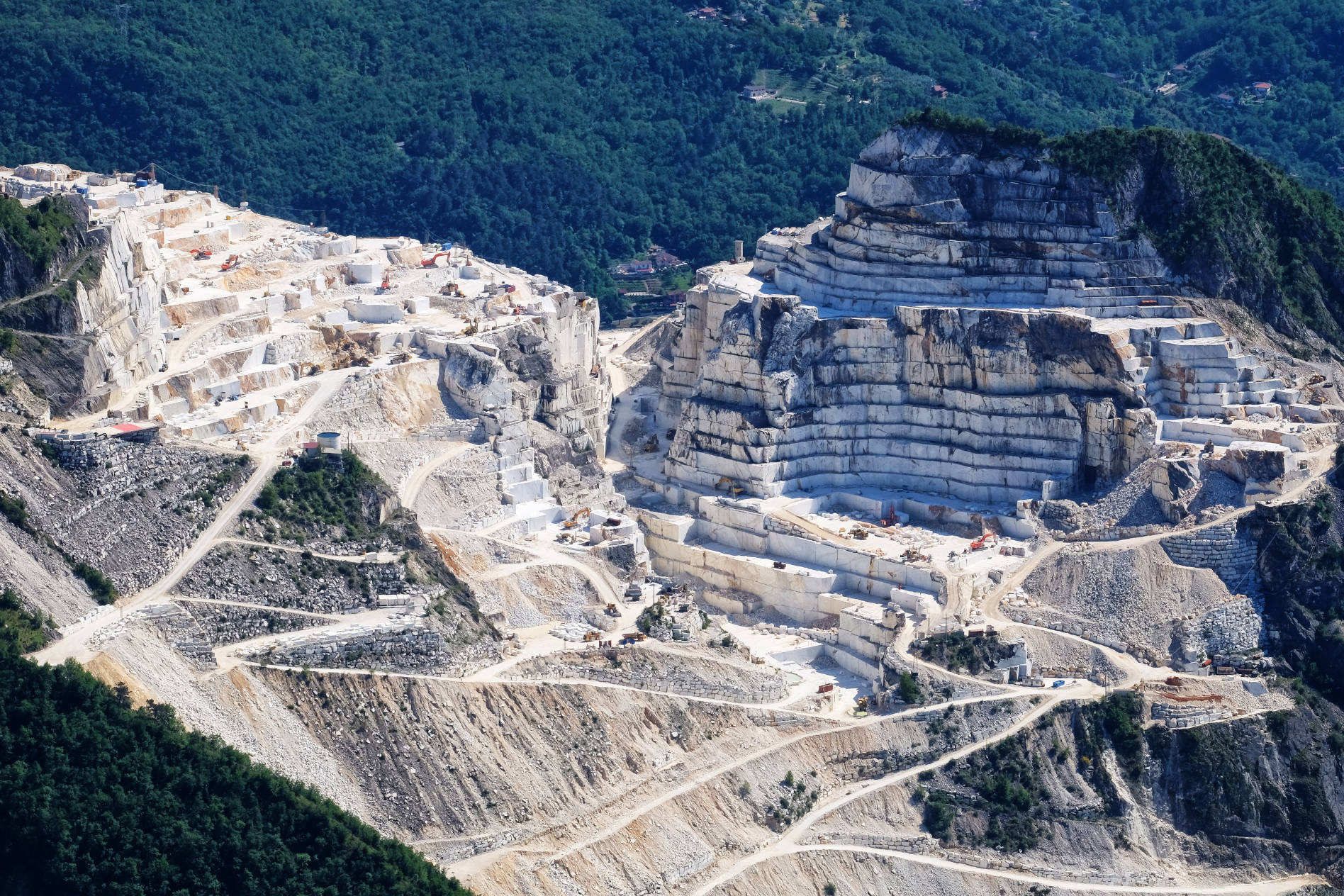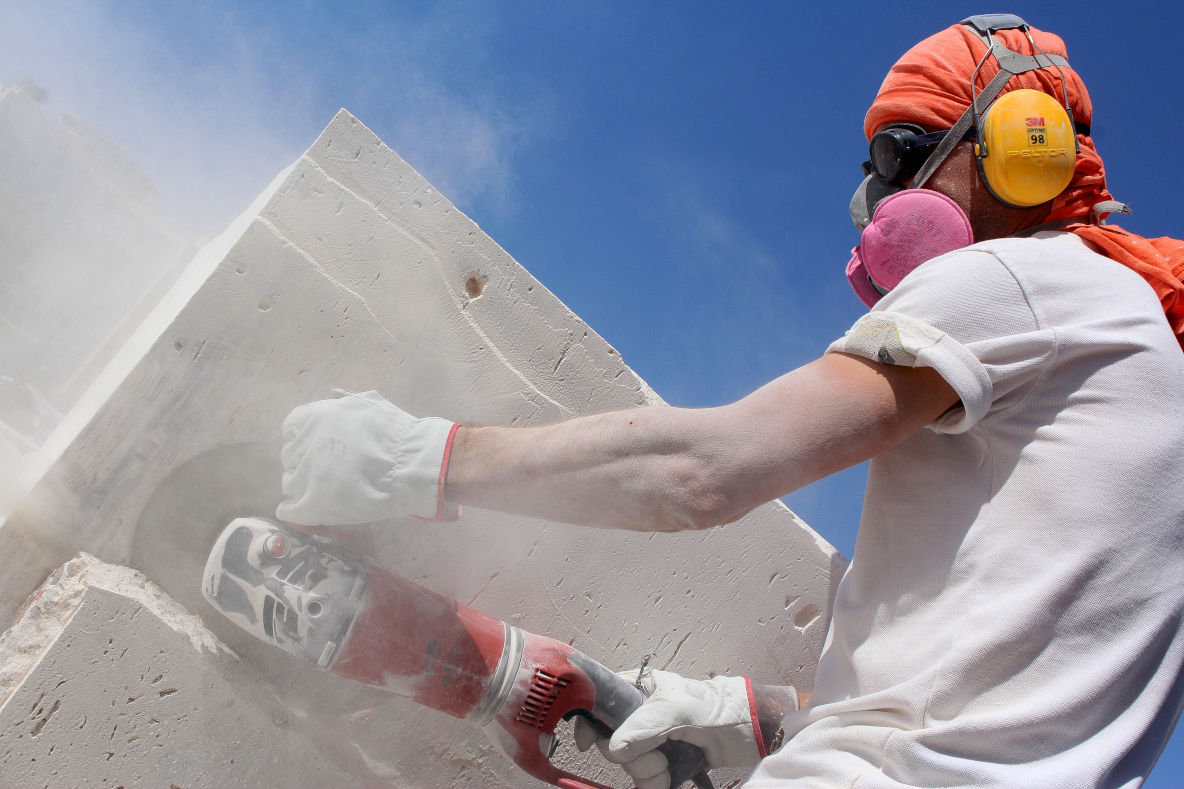

जेव्हा आपण याबद्दल विचार करणे थांबवता तेव्हा नैसर्गिक दगड मोठ्या प्रमाणात आपल्या आधुनिक सभ्यतेचा आधार बनतो. ज्या इमारतींमध्ये आपण राहतो, काम करतो आणि खरेदी करतो त्या जमिनीपासून आपण चालतो आणि चालतो, या अत्यावश्यक नैसर्गिक संसाधनाशिवाय जगण्याची कल्पना करणे कठीण आहे.
प्रवास ज्याची विविध रूपे नैसर्गिक दगड take from the depths of the earth and into the construction of homes, commercial buildings and roads is a fascinating one. Let us dive in and explore the origins of natural stone and how it’s made.

नैसर्गिक दगडाचे तीन प्रकारे वर्गीकरण केले जाऊ शकते: आग्नेय, सेडिमेंटरी आणि मेटामॉर्फिक.
Igneous rocks are the result of magma or lava solidifying and cooling, either beneath the earth’s surface or ejected from volcanoes and left to cool above-ground. Granite is the most common form of igneous stone but other kinds include basalt, dunite, rhyolite and gabbro.
Sedimentary rocks form through a combination of fragments from other rocks, along with the remains of plants, animals and other organic materials. These materials accumulate in deserts, oceans and lakes before they are compressed into their final form by the weight of the earth above them. Limestone is the most common sedimentary rock with siltstone, dolomite and shale comprising other variations.
Metamorphic rocks previously existed as igneous or sedimentary stones and were then transformed due to heat and pressure applied through exposure to magma, the weight of earth above them when buried deep underground, or a combination of both. Marble is the most famous stone of the metamorphic variety and quartzite, soapstone, gneiss and jade, among others, round out this fascinating category.

टस्कनी मध्ये संगमरवरी खदान
निसर्गाने दगड तयार करण्याच्या पहिल्या टप्प्याची काळजी घेतल्यानंतर, दगड काढून टाकण्याची आणि पुन्हा वापरण्यासाठी वापरण्याची पुढील पायरी मानवी हातांनी जगभरातील दगडांच्या खाणींमध्ये केली जाते.
दगड उत्खनन करण्याची प्रक्रिया विस्तृत आहे आणि त्यासाठी कुशल उत्खनन कामगारांसह शक्तिशाली यंत्रसामग्री आवश्यक आहे. दगडाला स्पर्श करण्याआधी, आवश्यक असलेल्या क्रियांची एक मोठी यादी आहे.
सर्वप्रथम, भूगर्भशास्त्रज्ञांच्या पथकाने उत्खनन केलेल्या खदानीमध्ये दगड शोधणे आवश्यक आहे ज्याचे परीक्षण केले जाऊ शकते. पुढे, डायमंड-टिप्ड ड्रिल बिट्ससह खडकामध्ये ड्रिल करून दगडाचा नमुना घेतला जातो. नंतर नमुन्याचे विश्लेषण केले जाते की त्यात इमारत सामग्री म्हणून वापरण्यासाठी इच्छित वैशिष्ट्ये आहेत की नाही हे शोधण्यासाठी.
बांधकामाच्या कारणासाठी दगड बिलास बसतो असे गृहीत धरून, स्थानिक सरकारकडून योग्य परवाने आणि परवानग्या मिळविण्याची लांबलचक आणि अनेकदा काढलेली प्रक्रिया सुरू होते. देश आणि राज्यावर अवलंबून, हे पूर्ण होण्यासाठी अनेक वर्षे लागू शकतात.
एकदा अंतिम मंजुरी मिळाल्यानंतर, कोणतेही मलबा, घाण आणि इतर अडथळे दूर करण्याचे काम सुरू होते जे अन्यथा उत्खनन प्रक्रियेत अडथळा आणू शकतात. या अडचणीत भर पडत आहे की अनेक खाणी दुर्गम आणि दुर्गम भागात आहेत, वास्तविक काम सुरू होण्यापूर्वी संपूर्ण रस्ते आणि बोगदे बांधणे आवश्यक आहे.
खदानाच्या दर्शनी भागापासून दगड वेगळे करण्यासाठी डायमंड-वायर सॉ, उच्च-शक्तीच्या टॉर्च आणि वेळेनुसार स्फोटक स्फोटांचा वापर केला जातो. परिणामी मोठे ब्लॉक्स, ज्यांचे वजन अनेकदा चाळीस टनांपेक्षा जास्त असते, नंतर पुढील कटिंग आणि प्रक्रियेसाठी सुविधेमध्ये नेले जाते.

खदान कामगार कटिंग स्टोन
प्रक्रियेच्या सुविधेवर, दगडांचे ठोके नंतर हाय-स्पीड गँग सॉद्वारे स्लॅबमध्ये कापले जातात जे धूळ उत्सर्जन कमी करण्यासाठी कापताना पाणी देखील सोडतात. ते ज्या वेगाने काम करतात त्या वेगाने असूनही, टोळीच्या आरींना साधारणत: 20 टन दगडाचे ब्लॉक कापण्यासाठी सुमारे दोन दिवस लागतात.
पुढे, इच्छित फिनिश देण्यासाठी स्लॅब पॉलिशिंग मशीनद्वारे पाठवले जातात. पॉलिश हे सर्वात सामान्य फिनिश आहे ज्यामध्ये होन्ड केलेले, लेदर केलेले आणि ब्रश केलेले इतर पर्याय आहेत जे दगडाच्या पृष्ठभागावर वेगवेगळ्या प्रमाणात पोत प्रदान करतात.
Now that the slabs are cut to the correct size and have the desired finish, the final stage in a natural stone’s journey into your home takes place at the fabricator’s facility. Here, the stone slabs are further cut to specification for each individual project which includes shaping of the edges into the detail required for installation.
Now that you know the incredible journey that natural stone takes from deep inside the earth and into your kitchen, I’m sure you’ll agree that it is certainly worth the wait. Thanks to advancements in the industry over the years and the demand that exists for natural stone of all kinds, you don’t actually have to sit around while your marble, quartzite or granite is quarried and processed.